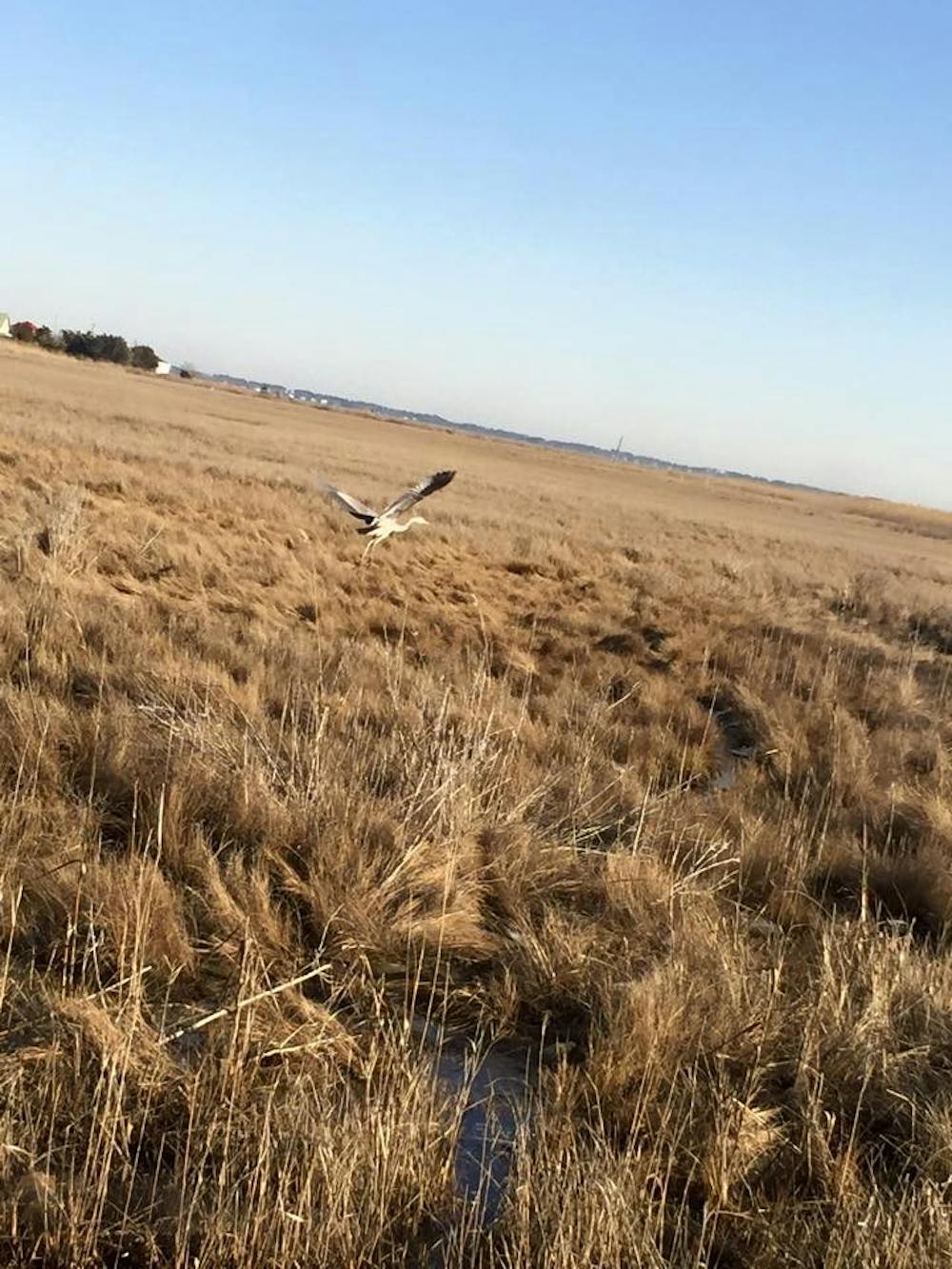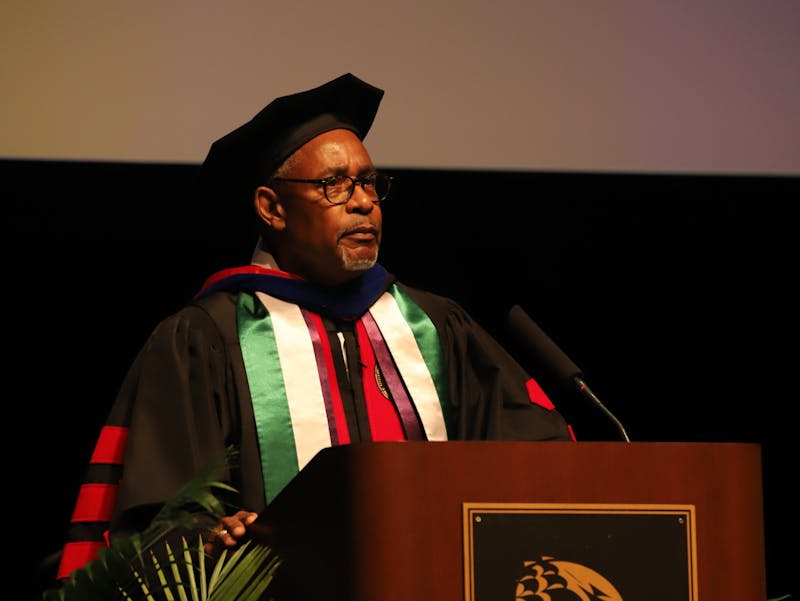While Shippensburg University students were relaxing on spring break, a courageous cluster of Geography and Earth Science Organization (GESO) students were knee-deep in the brackish wetlands of the Chincoteague Bay, swinging machetes.
After classes let out on Friday, March 6, 18 GESO students crowded into vans for a four-hour drive down to the Chincoteague Bay Field Station in Virginia.
This year’s team, armed with machetes and weed-wackers, were set on weeding out as much Phragmite grass as they could from a designated area of Chincoteague Bay wetlands.
Phragmite grass is a big problem for biodiversity in the Chincoteague area. Once it takes hold of a wetland, it grows faster than bamboo and quickly edges out many other plant and wildlife species. After students cleared an acre of Phragmite, they celebrated their hard work with a bonfire.
“We got to help the station and we had a bonfire with all of the Phragmite we chopped down. It was definitely worth the four-hour drive down in a very, very crowded van. The trip was so much fun and I definitely plan to participate again in the future,” said Katherine Cromwell, a junior geo-environmental studies major. This was her first trip.
As well as weeding, the students also checked up on the “oyster castles” they built on previous trips. Constructed with pulverized oyster shells and concrete, the castles fit together like huge Lego sets, full of rough corners to which baby oysters could latch on.
SU students had built the structures on the tide lines in hopes that baby oysters would attach. When they came back this year, they were not disappointed: last year’s bare castles were bristling with new oysters.
Oysters are crucial for Chincoteague Bay health. They act as natural filters, sucking dirty bay water in through one valve and spitting clean water out of another.
A mature oyster filters up to 26 gallons of water per day. Before overfishing and disease decimated the oyster population in the ’50s, oysters kept the bay water clean and habitable for a rich diversity of wildlife. Oyster castle building is one way that the GESO students are trying to improve the quality of the bay.
“Of course, we haven’t got the oyster population back to where it was years ago, but we have made progress building up the shoreline. Last year we put them in. Now, we can see growth and spat — which is baby oysters — floating around in the castles,” Patrick Peck said, a junior geo-environmental major.
The students also spent time on Wallops Island, cleaning trash off the shoreline and studying wildlife before heading back to Shippensburg on Monday, March 9.
Operating since 1968, the Chincoteague Bay Field Station educates youth and college students through hands-on wilderness experience in surrounding marshes, beaches, forests and bays. It also offers college-level classes.
Students interested in getting their hands dirty on the next alternate spring break can contact GESO club president Marisa Sames for more information.




The Slate welcomes thoughtful discussion on all of our stories, but please keep comments civil and on-topic. Read our full guidelines here.